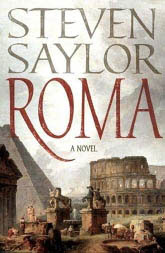Historian’s Notebook has moved. Details here.
Before I researched my newest novel, Sword of the Gladiatrix, I got most of my ideas and impressions of gladiators from the media: Russel Crowe in Gladiator and (for those of us of a certain age) Kirk Douglas in Spartacus. More recently Starz had a fantastic (in more ways than one) show that ran for three seasons titled Spartacus: War of the Damned. All of these shows perpetuate some myths that I hope to bust wide open in this post. They also got a couple of things right, which I’ll point out.
Myth #1: All gladiators were men.
Most were, but not all. Here I’ll give Gladiator a weak thumbs up—they had women in chariots fighting against a group of men in a re-enactment of a classic battle in an arena scene, but other than that, women gladiators don’t show up in most visual media. It’s left to us lowly writers to correct the balance. If you look closely, women in the arena show up in art, literature, and law. Sword of the Gladiatrix was inspired by a particular stone carving of two female gladiators in the British Museum. More recently, archaeologists have uncovered a bronze statue of a gladiatrix holding a sica—a curved sword. Tacitus, Suetonius, Dio, Martial, and Juvenal all write about female gladiators—usually (except for Martial) with some element of dismay or sarcasm. An organizer in Ostia brags on his tombstone that he was the first person to put women in the arena as fighters. My favorite evidence is in the law: The first Roman Emperor Augustus forbade recruiting noble and free women as gladiators. Nearly two hundred years later, Emperor Septimus Severus banned single combat by women in the arena. If women weren’t being recruited and fighting, why have a ban? Human nature being what it is, these prohibitions probably made the fights all the more popular because they were illegal. I’m sure female gladiatorial contests continued for some time. (more…)


 Over three thousand years ago, a murder takes place on an island in a river flowing through the hilly region of Italy later known as the ruma. This bloody act presages the rise of one of the ancient world’s most ruthless empires. In Roma: The Novel of Ancient Rome,
Over three thousand years ago, a murder takes place on an island in a river flowing through the hilly region of Italy later known as the ruma. This bloody act presages the rise of one of the ancient world’s most ruthless empires. In Roma: The Novel of Ancient Rome,